Today was the St. George's day event for my son's Beaver lodge, rather than drop him on the common and head home to waste an hour and three quarters before picking him up, I thought I'd use the time a little more pro-actively and have a mooch about in a local wood.
As it happened the tide was well and truly out, so I first opted for a bit of a bimble on the beach, the top end of Morcambe Bay can be quite prolific. It's also flatter than a steamrolled hedgehog, which is a pretty stark contrast to the bulk of Cumbria to the North of it.
Looking inshore from a few hundred yards onto the sand, you'd be hard pushed to believe there's a road and a car park in there, let alone a village 800 yards away.
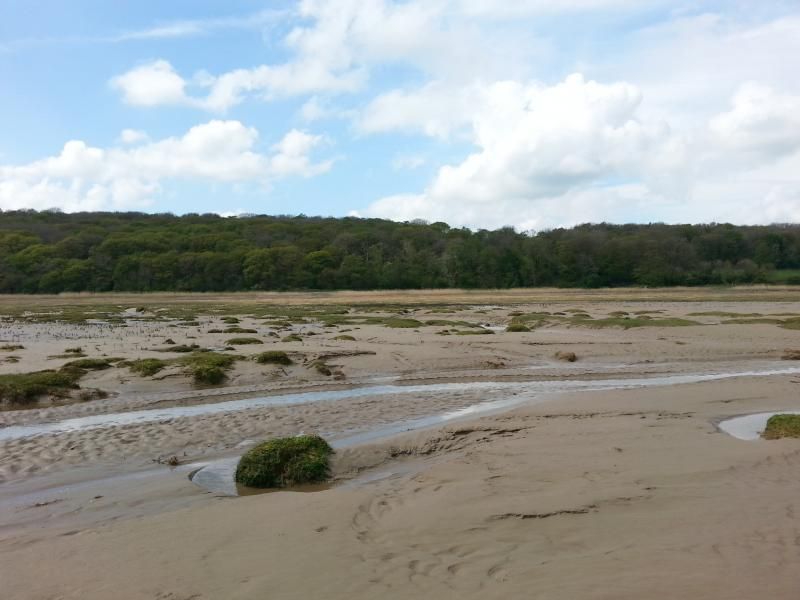
There were a couple of things I wanted to find, primarily sea kale. Relatively common on the South coast, I've only found one near here and that had been grossly over-harvested, possibly to the point of killing it as I've not seen any since. The other was marsh samphire, it's pretty prolific where it appears and the top of the bay is usually pretty good. I was hoping the mild winter and early spring would have brought the early shoots up... errrm... early! Sadly it doesn't seem as temperature dependent as other plants and I was far too early.
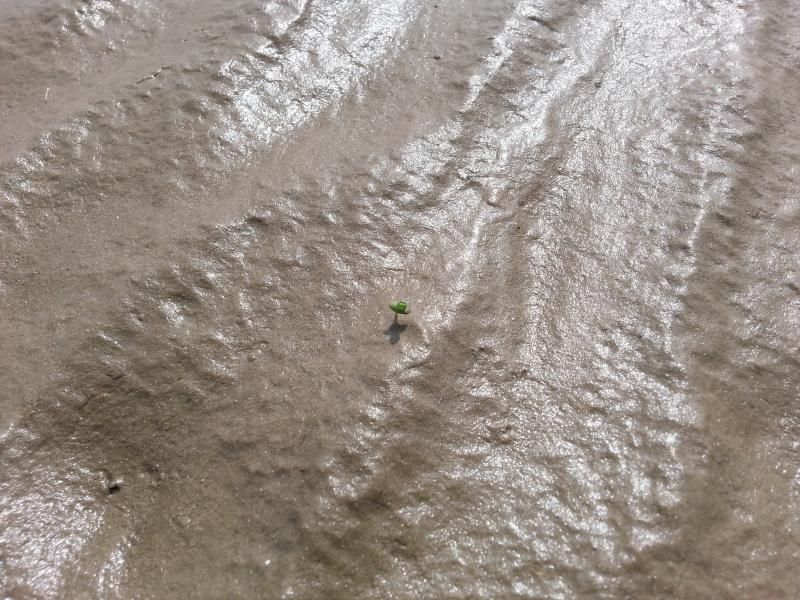
They're coming up in numbers though, so hopefully in the next month or two there'll be a sustainable harvest.
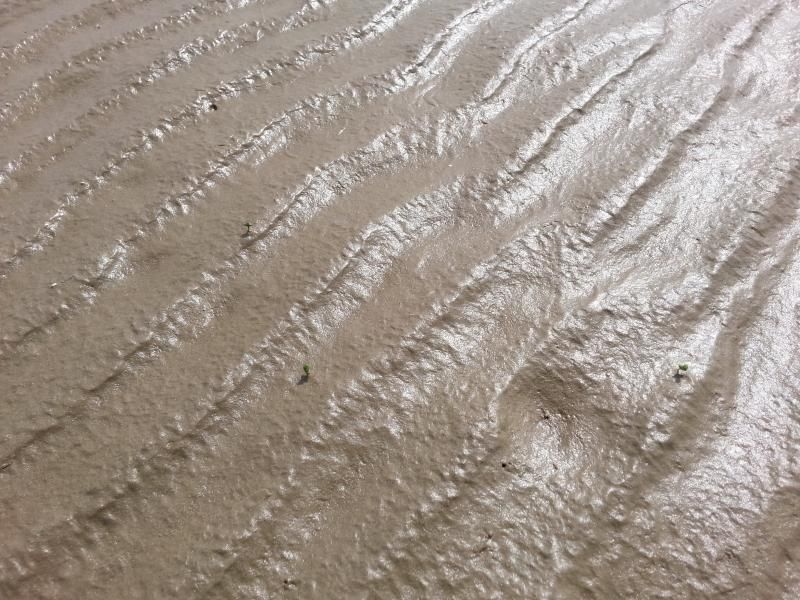
Walking back to the shingle I spotted one of these:
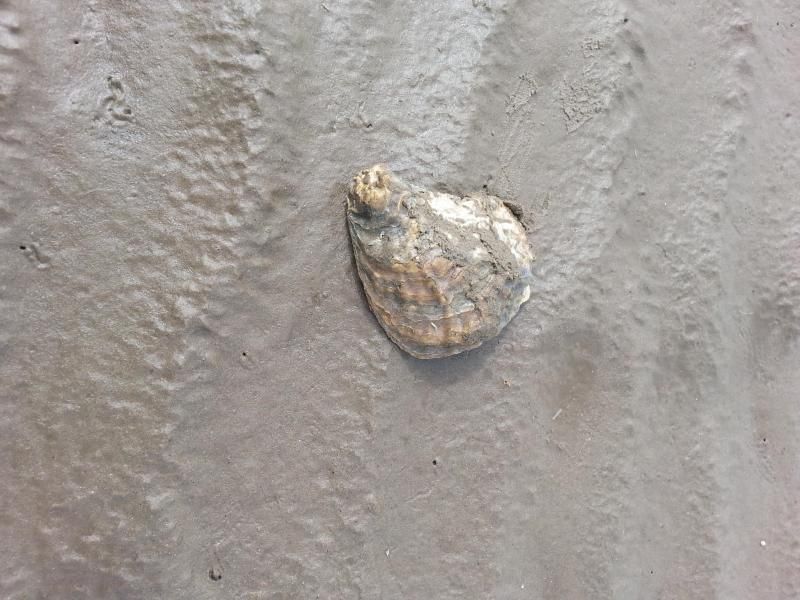
What do you reckon? A genuine wild one or someone's discard after a posh party? Bearing in mind some of the other detritus I spotted while out I'd be more surprised if it were a local than rubbish.
No oyster this and I'm sure I should know what it is, I've found loads in the past and always thought 'clam' for no real reason - can anyone put a proper ID on it please?
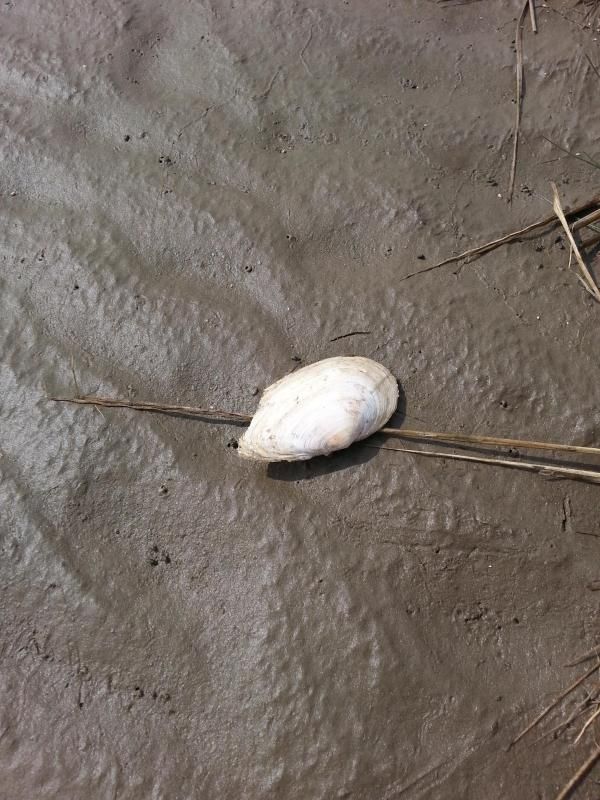
Apart from a huge orange plastic bollard, presumably washed in on the tide or washed down from the recent road works at Greenodd, the rest of the walk in consisted only of the occasional dead crab, a bit of reed clump hopping and carrying aforementioned chunk of day-glo plastic for later disposal.
Sadly no sea kale, but I did come across this:
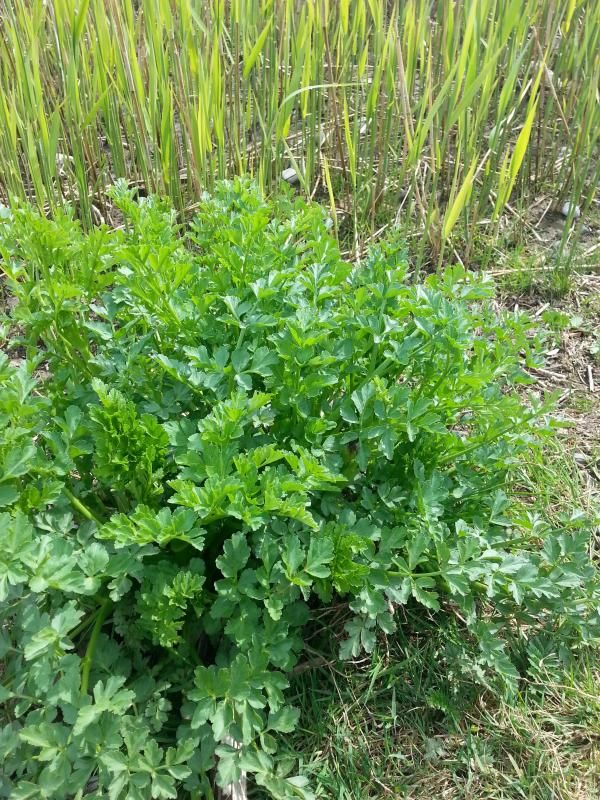
Can anyone ID this please? A close up of the foliage:
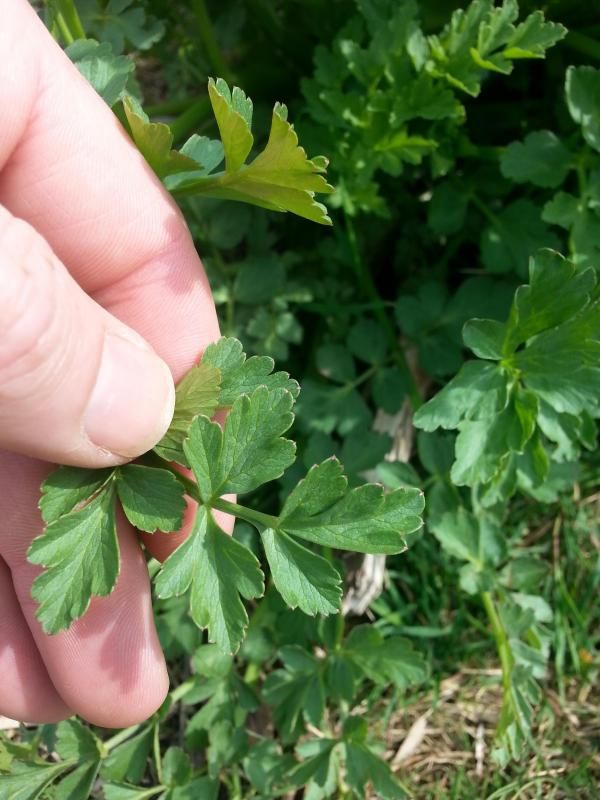
It's got a fleshy stem and when crushed has a nice smell, a little like pea shoots.
One of the oddities which I found was this:
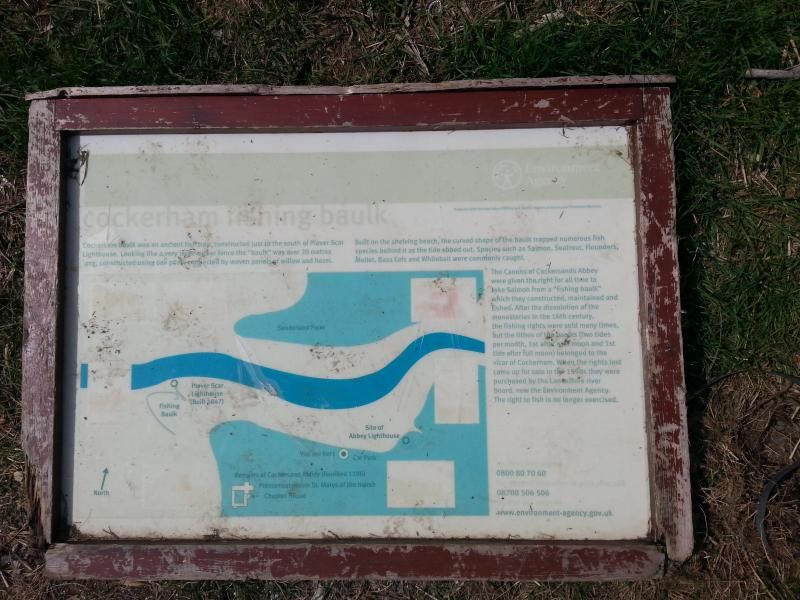
Perhaps not so unusual, one might think, except that Fleetwood where the sign was originally erected and the Cockerham Fishing Baulk are the best part of 15 miles away and on the other side of the bay... that it managed to float here, presumably having become a victim of the recent high winds, while remaining so intact is a small marvel.
The shingle is, apart from the omnipresent litter either dropped at sea and brought in by tidal flow or casually dumped by walkers, dog walkers and people partying on the beach, is an intensely beautiful strip, scarcely 30 feet wide. On one side are the reed bed margins, with small semi stagnant pools waiting for the next really big tide, the white and broken stems of last years growth beginning to give way to this years new, green, shoots. On the other, a small wood protected from most of the tides by a vertical reminder that once the seas were very much higher and that most of what we see in our short lives as 'permanent' is very much fluid and changing when viewed in a different timescale. The vertical 'wall' in the pictures below is a limestone pavement, once a sea/shore floor covered in crustacea, compressed by time and it's own weight into rock.

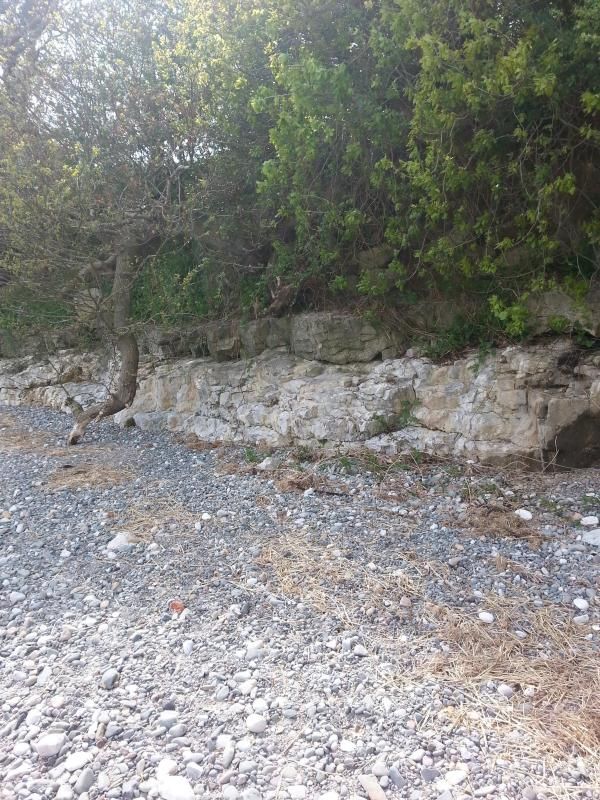
It's not all a bed of roses though... nature is red in tooth and claw, or sometimes just grey and dusty in decay as this poor fella found
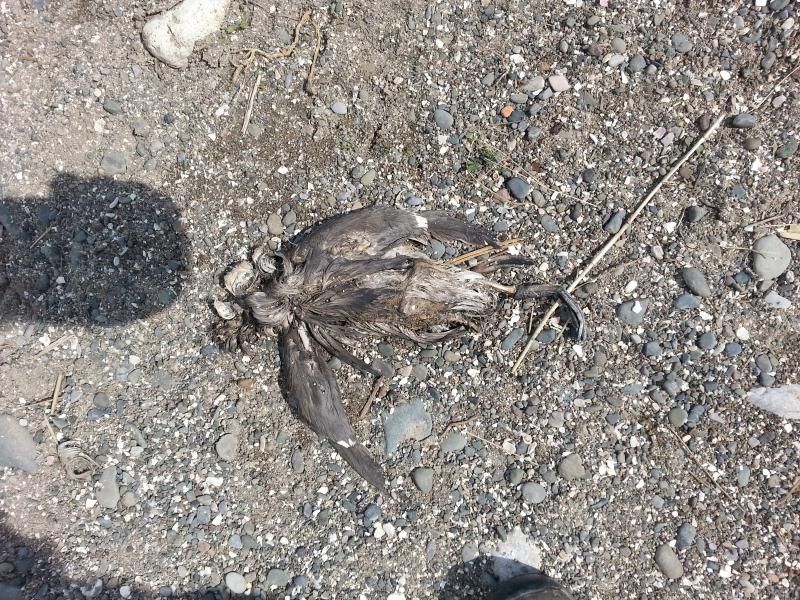
Another oddity... at first I thought it was an old rubbish bin left by the tide, but it turned out to be a little stranger than that:
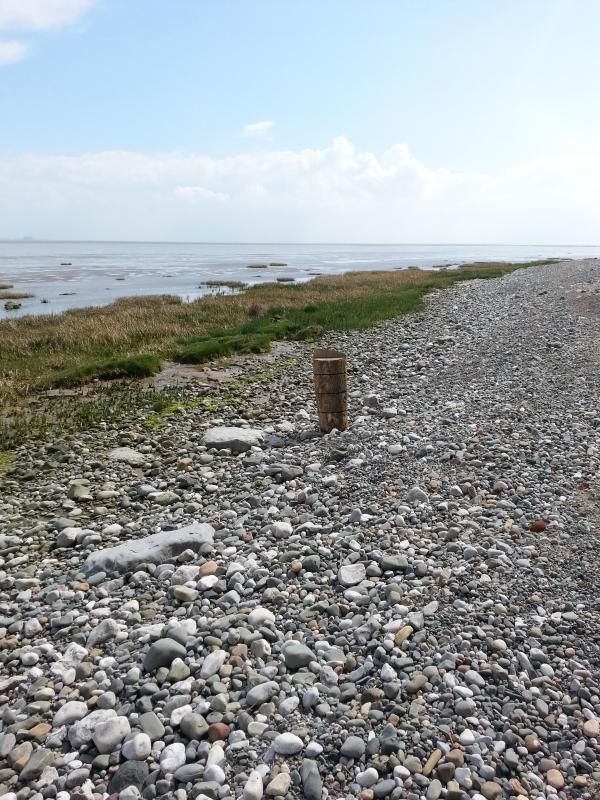
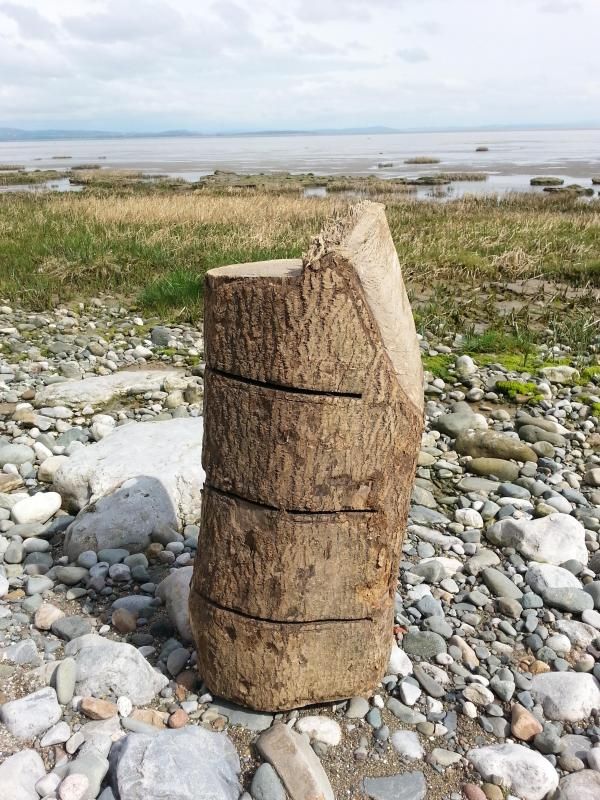
Again, I'm not sure if this is a wash in or dropped off in preparation for a beach party. It's obviously been deliberately cut like that, no idea why though, but it had a sort of Swedish candle gone awry look to it.
Back at the car early, I'd another 45 minutes before I needed to pick the boy up...
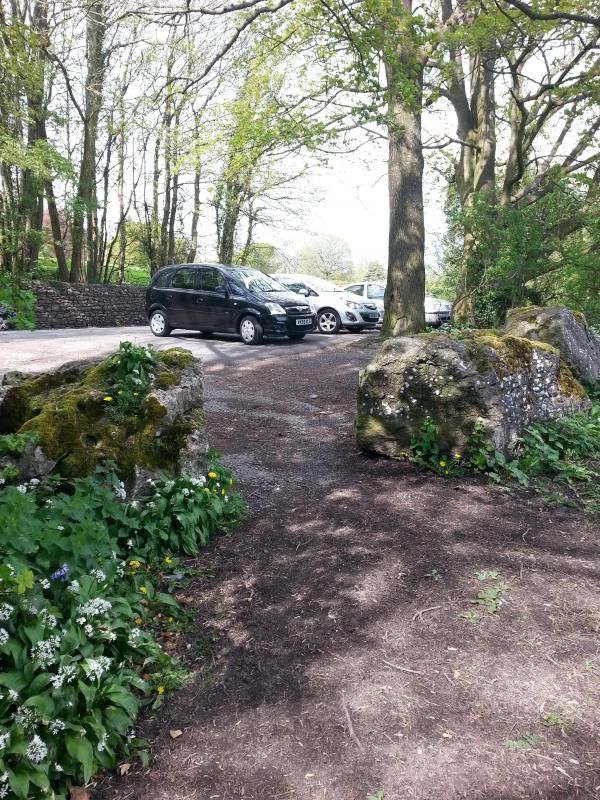
There are paths aplenty through the wood lining the shore, the edges of them carpeted with ramsons
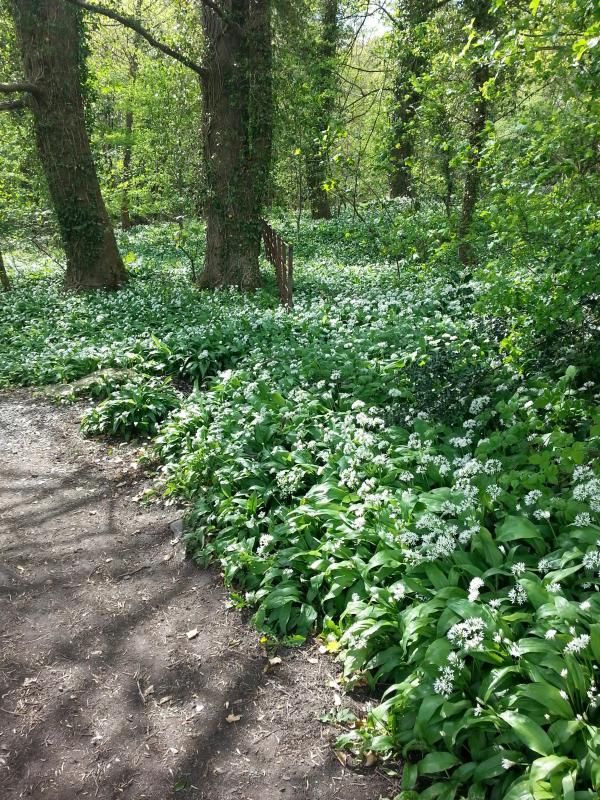
Here was a timely reminder to be careful what you pick , even when the ID looks certain, as growing not five feet from this little clump of ramsons
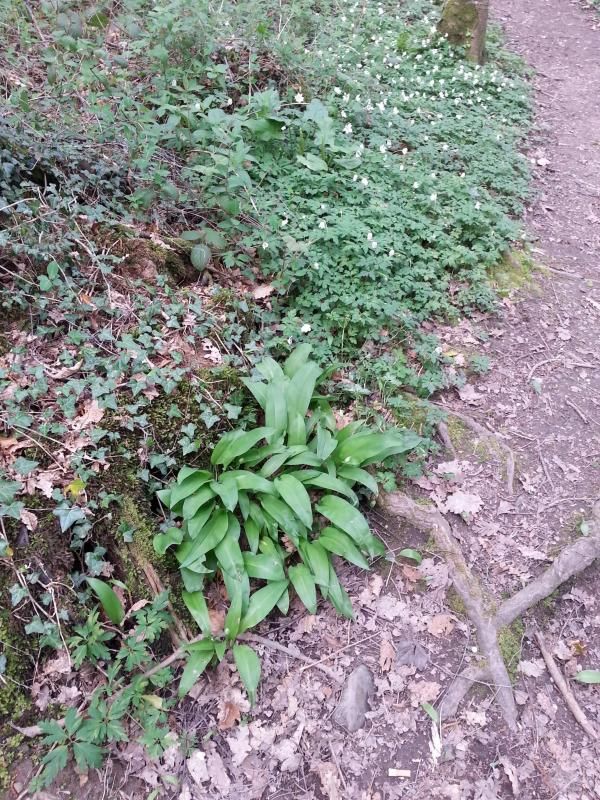
was this beauty

I've found it closer before now and, while it's not the most poisonous of plants, it'll give you a pretty nasty taste in the mouth. Early season its a little harder to differentiate from young wild garlic leaves and definitely best avoided.
I found a huge birch polypore, you can just about make it out at the top of this dead standing birch
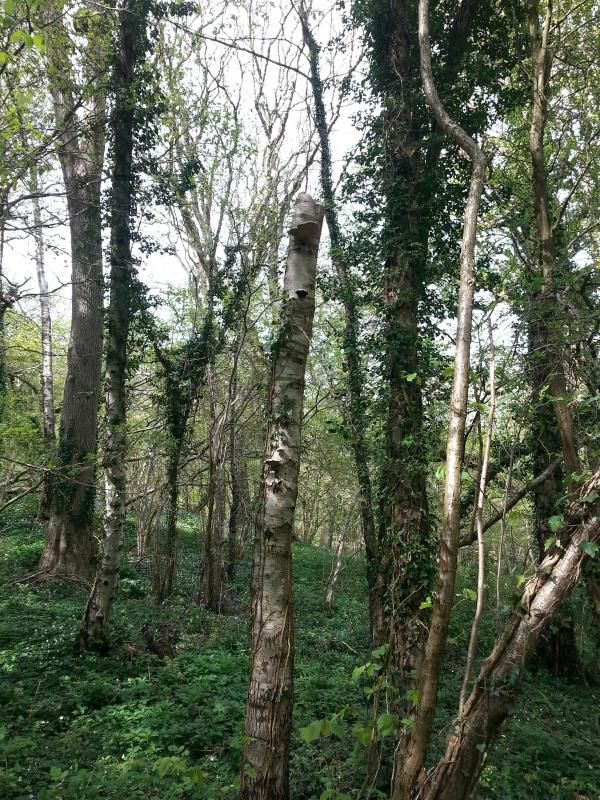
Way out of my reach and I'd no need or it at the moment, so I left it where it was, it was like a sideplate though, almost big enough to eat your dinner off
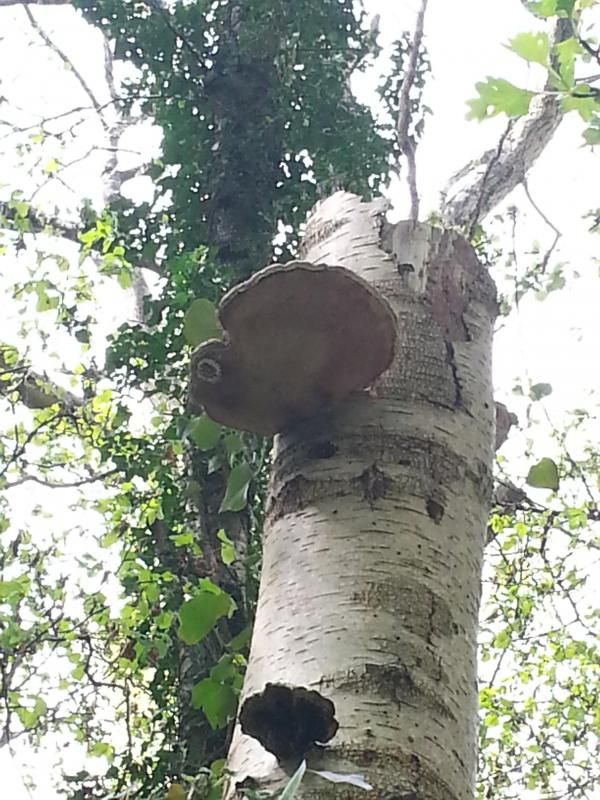
Lastly I found a felled ash, quite a big one with a huge number of cramp balls growing on it. I gathered a slack handful of the better ones, as several were well past their best and headed back to the car.
All in all, quite a successful way to spent an hour and a half I'd otherwise have wasted.
As it happened the tide was well and truly out, so I first opted for a bit of a bimble on the beach, the top end of Morcambe Bay can be quite prolific. It's also flatter than a steamrolled hedgehog, which is a pretty stark contrast to the bulk of Cumbria to the North of it.
Looking inshore from a few hundred yards onto the sand, you'd be hard pushed to believe there's a road and a car park in there, let alone a village 800 yards away.

There were a couple of things I wanted to find, primarily sea kale. Relatively common on the South coast, I've only found one near here and that had been grossly over-harvested, possibly to the point of killing it as I've not seen any since. The other was marsh samphire, it's pretty prolific where it appears and the top of the bay is usually pretty good. I was hoping the mild winter and early spring would have brought the early shoots up... errrm... early! Sadly it doesn't seem as temperature dependent as other plants and I was far too early.

They're coming up in numbers though, so hopefully in the next month or two there'll be a sustainable harvest.

Walking back to the shingle I spotted one of these:

What do you reckon? A genuine wild one or someone's discard after a posh party? Bearing in mind some of the other detritus I spotted while out I'd be more surprised if it were a local than rubbish.
No oyster this and I'm sure I should know what it is, I've found loads in the past and always thought 'clam' for no real reason - can anyone put a proper ID on it please?

Apart from a huge orange plastic bollard, presumably washed in on the tide or washed down from the recent road works at Greenodd, the rest of the walk in consisted only of the occasional dead crab, a bit of reed clump hopping and carrying aforementioned chunk of day-glo plastic for later disposal.
Sadly no sea kale, but I did come across this:

Can anyone ID this please? A close up of the foliage:

It's got a fleshy stem and when crushed has a nice smell, a little like pea shoots.
One of the oddities which I found was this:

Perhaps not so unusual, one might think, except that Fleetwood where the sign was originally erected and the Cockerham Fishing Baulk are the best part of 15 miles away and on the other side of the bay... that it managed to float here, presumably having become a victim of the recent high winds, while remaining so intact is a small marvel.
The shingle is, apart from the omnipresent litter either dropped at sea and brought in by tidal flow or casually dumped by walkers, dog walkers and people partying on the beach, is an intensely beautiful strip, scarcely 30 feet wide. On one side are the reed bed margins, with small semi stagnant pools waiting for the next really big tide, the white and broken stems of last years growth beginning to give way to this years new, green, shoots. On the other, a small wood protected from most of the tides by a vertical reminder that once the seas were very much higher and that most of what we see in our short lives as 'permanent' is very much fluid and changing when viewed in a different timescale. The vertical 'wall' in the pictures below is a limestone pavement, once a sea/shore floor covered in crustacea, compressed by time and it's own weight into rock.


It's not all a bed of roses though... nature is red in tooth and claw, or sometimes just grey and dusty in decay as this poor fella found

Another oddity... at first I thought it was an old rubbish bin left by the tide, but it turned out to be a little stranger than that:


Again, I'm not sure if this is a wash in or dropped off in preparation for a beach party. It's obviously been deliberately cut like that, no idea why though, but it had a sort of Swedish candle gone awry look to it.
Back at the car early, I'd another 45 minutes before I needed to pick the boy up...

There are paths aplenty through the wood lining the shore, the edges of them carpeted with ramsons

Here was a timely reminder to be careful what you pick , even when the ID looks certain, as growing not five feet from this little clump of ramsons

was this beauty

I've found it closer before now and, while it's not the most poisonous of plants, it'll give you a pretty nasty taste in the mouth. Early season its a little harder to differentiate from young wild garlic leaves and definitely best avoided.
I found a huge birch polypore, you can just about make it out at the top of this dead standing birch

Way out of my reach and I'd no need or it at the moment, so I left it where it was, it was like a sideplate though, almost big enough to eat your dinner off

Lastly I found a felled ash, quite a big one with a huge number of cramp balls growing on it. I gathered a slack handful of the better ones, as several were well past their best and headed back to the car.
All in all, quite a successful way to spent an hour and a half I'd otherwise have wasted.
Last edited:
